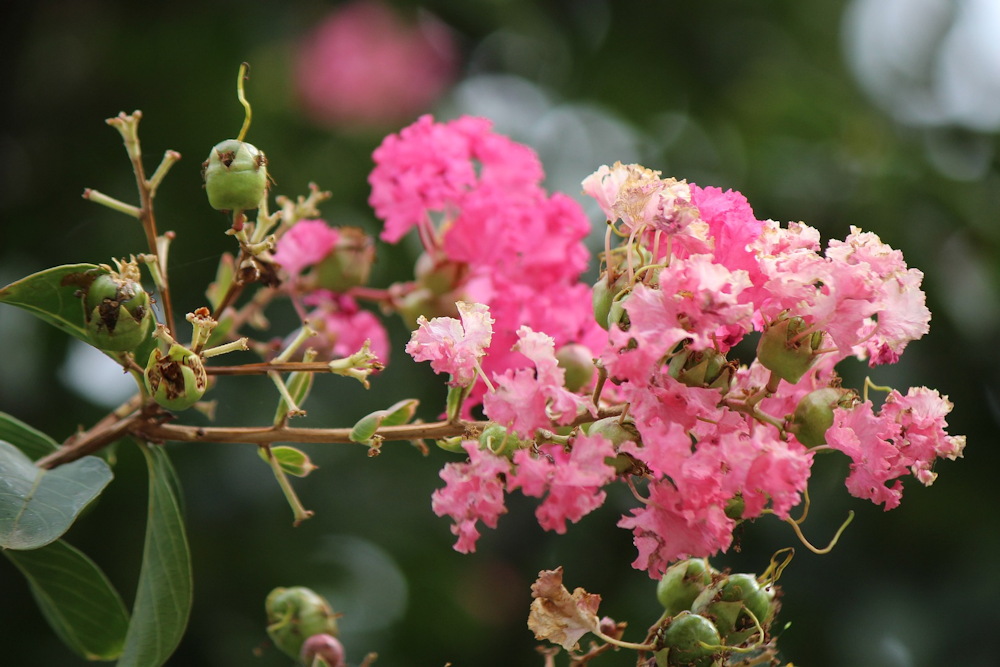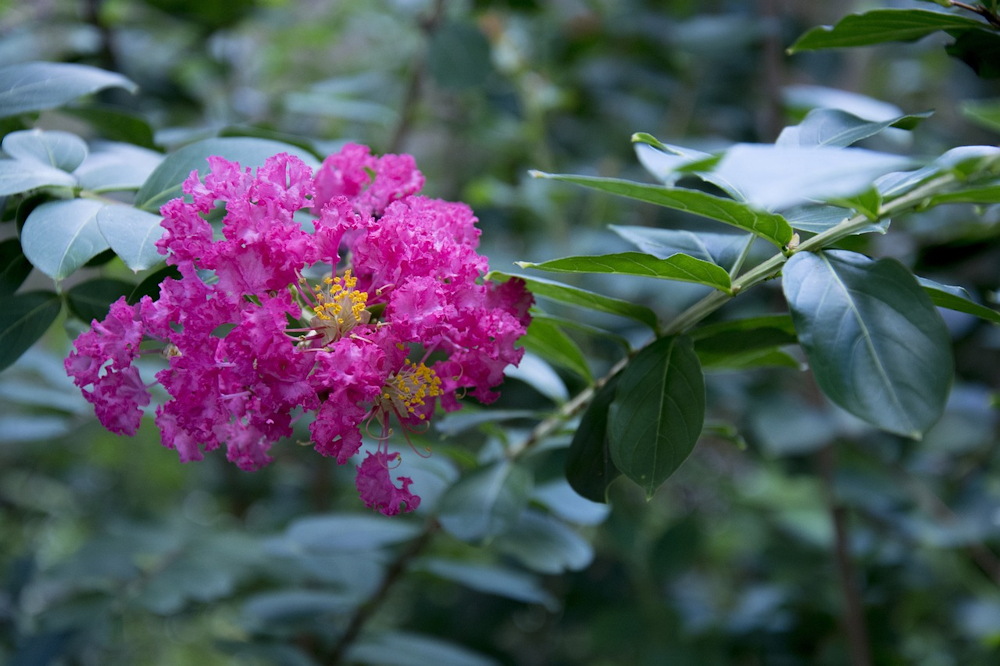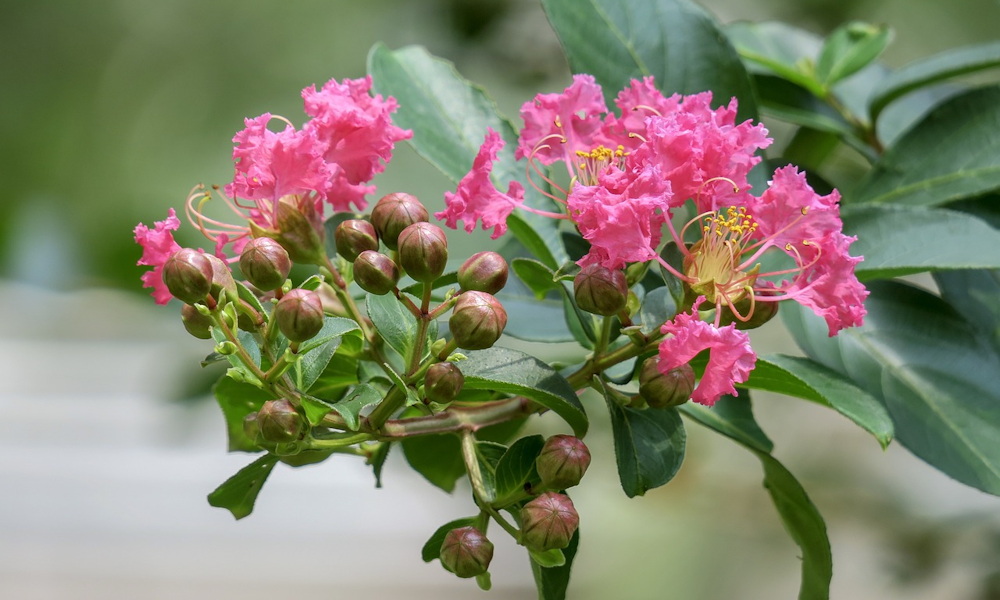Crepe myrtle is a name that resonates with color, resilience and elegance in garden landscapes. This remarkable plant has won the hearts of gardeners worldwide with its vibrant blooms and stunning bark. In this article, we explore the origin, appearance, flowering characteristics and care requirements of crepe myrtle, along with some interesting facts that will leave you in awe of this garden gem.

A Native of Eastern Asia
Crepe myrtle (Lagerstroemia indica) is native to regions of China, Korea, Japan and Southeast Asia. It’s a plant with a rich history, having been cultivated for centuries in these areas. This heritage makes it a robust addition to gardens, with a proven track record of adaptability and endurance.

An Eye-Catching Appearance
Crepe myrtle is a versatile plant that can be grown as a small tree or a large shrub. It typically ranges from 10 to 30 feet (3 to 9 meters) in height, with a spread of 10 to 20 feet (3 to 6 meters). Its leaves are deciduous, turning a brilliant shade of orange or red in autumn. However, the real showstopper is its unique bark – smooth, mottled and shedding in thin layers, revealing a beautiful mosaic of colors underneath.

Vibrant, Crepe-Like Flowers
When it comes to flowers, crepe myrtle truly stands out. Its blooms are typically in large clusters at the end of branches, creating a spectacle of color throughout the summer. The petals are delicate and ruffled, resembling crepe paper, hence the plant’s common name.

These flowers come in a range of colors, from white and pink to shades of red, purple and even lavender. The extended blooming period, often lasting several weeks, makes crepe myrtle a favorite for adding long-lasting color to gardens.

A Versatile Ornamental Tree
Crepe myrtle is often used as an ornamental tree in gardens and landscapes. Its vibrant flowers, attractive bark and adaptability make it a great addition to various garden styles. It can be used as a specimen tree, a privacy screen, or even in mixed borders. Crepe myrtle can be pruned into various shapes, allowing gardeners to tailor its appearance to their specific needs.

Care and Maintenance
Crepe myrtle is relatively easy to care for, but it does have some specific needs. It thrives in full sun and well-drained soil, and it’s quite drought-tolerant once established. Pruning is often required to maintain shape and encourage robust blooming.

However, it’s important not to over-prune, as this can lead to fewer flowers and unsightly growth patterns. Crepe myrtle can also be susceptible to powdery mildew, so ensuring good air circulation around the plant is crucial.

Fascinating Facts about Crepe Myrtle
Here are some interesting tidbits about crepe myrtle that might surprise you:
- Longevity: Crepe myrtle trees can live for decades, with some specimens reaching over a hundred years old. This makes them a long-lasting addition to any garden.
- Diverse Uses: In addition to its ornamental value, crepe myrtle has been used in traditional Asian medicine for various purposes.
- Bark’s Unique Shedding: The shedding of the bark, which creates a mottled appearance, is a natural process and does not harm the tree. It adds to the plant’s unique aesthetic.
- Pollinator-Friendly: Crepe myrtle flowers attract a variety of pollinators, including bees and butterflies, making it a great choice for eco-friendly gardens.
- Multiple Blooms Per Year: In some climates, crepe myrtle can produce a second round of blooms if pruned correctly after the initial flowering season.



With its stunning appearance, ease of care and fascinating traits, crepe myrtle is a plant that deserves a spot in every garden. Whether you are seeking to add vibrant color, unique texture or wildlife-friendly elements to your landscape, crepe myrtle is a delightful choice.










